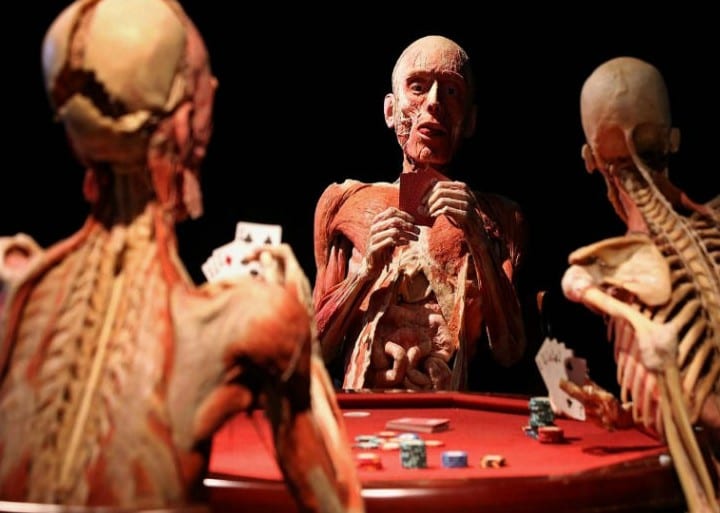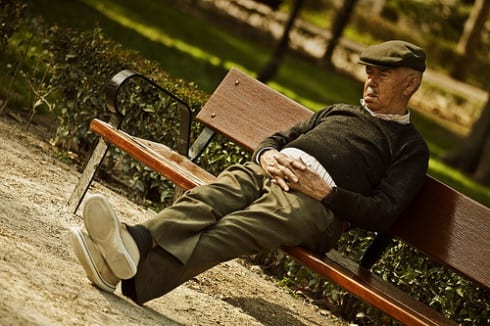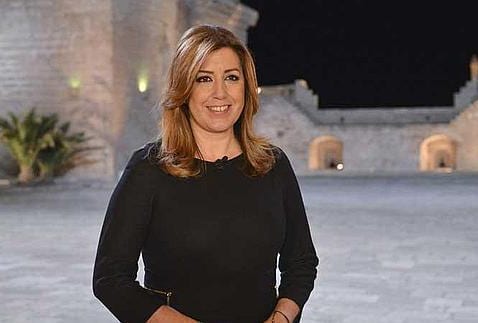IF you’ve ever fancied seeing a cut open body then head down to the Real Bodies Exhibition in Lisbon.
 Let’s be honest, we are all fascinated by dead things.
Let’s be honest, we are all fascinated by dead things.
Whether it’s road-kill, a half decomposed animal or bones in a grave – we can’t help but stare. It is within human nature to be inquisitive about what goes on beneath the skin.
Now, with the Real Body Exhibition in Lisbon, you can satisfy this innate curiosity.
Hundreds of donated bodies have being put on display. Each carefully presented to demonstrate a different system operating within your bodies, alongside damaged organs demonstrating what happens when things go wrong.
I stumbled upon this exhibition located inside the Cordoaria Nacional on Avenida da India by accident.
We were trundling back to the city centre, having visited the Monasterio de Jeronimo, when we saw banners advertising the ‘Real Bodies’ Exhibition. My curiosity tickled, I beseeched my friends to enter.
It was a decision we will never regret.
For just 13.50 euros, if you’re a student, we gained entry to the exhibition. The price is slightly higher for adults at 15.50 euros. Although at the outset a high price, the size and complexity of the display more than makes up for it.
The exhibition is open daily from 10:00 – 20:00 until 10 April, when it closes forever
You begin with a description of the development of the study of anatomy, before being allowed to see your first ‘dead thing.’
The study of Anatomy is the study of the organisation of bodies (where the muscles and veins go etc). Where bones and muscles on your body are placed, why, and what their function is.
Horrifically, when the discipline was still in its infancy, living people were dissected. Yes, live people. In Ancient Egypt it was legal to dissect criminals whilst they were still alive.
The exhibition has been divided into ten sections. Each contains an entire real body, presented in a unique position, alongside extracted organs.
These are generally presented together as their independent system, and completely alone. Descriptive information is available in both Portuguese and English. You can also your hands on an audio guide for just three euros more.
 Every part of the body is touched upon, from muscular system, to the reproductive system, to the digestive tract.
Every part of the body is touched upon, from muscular system, to the reproductive system, to the digestive tract.
If you’ve ever wanted to see what a dried out and cut open penis or vagina looks like, now is your chance. I saw a group of young guys staring intently at one of the females genitalia, presumably fascinated by its complexity and not at all motivated by sexual interest.
One of the most informative parts of the exhibition is the fetal section. This charts the development of a baby in the mothers womb from conception up to 24 weeks. The foetus is presented at weekly stages of development, as an actual foetus that did not reach adulthood. Although the origins of these foetuses remain, somewhat worryingly, blurred, we assume that they are from abortions and willingly donated by the parents.
This section prompted a gripping discussion of the programme ‘I didn’t know that I was pregnant.’ In this, ladies that didn’t realise that they were pregnant are suddenly caught short when they realise that they are going into labour. After a lot of panic owing to extreme chest pains and much yelling on account of the husband, a baby appears.
The circulatory system casts are also worth a mention. Preservative liquid was injected into the blood stream and allowed to set, then the rest of the body was allowed to fade away. The result is an incredible cast of the arteries and veins running throughout the entire body.
The exhibition proved interesting, exciting and informative. I have never before, and probably never will again, see beneath the skin in such exquisite detail. The ability to ‘walk through’ a clear and accurate explanation of your body and how it functions is an unforgettable and unmissable experience.
You can find more information on the exhibition using the link attached here – www.realbodies.pt
Click here to read more News from The Olive Press.








